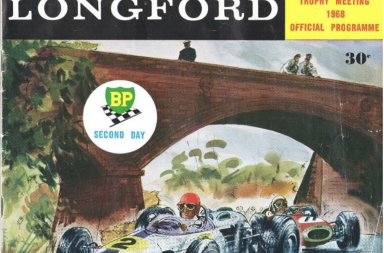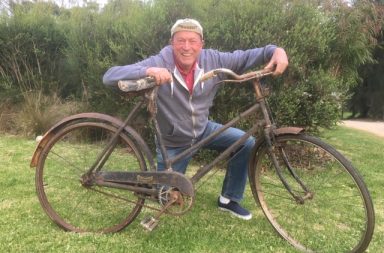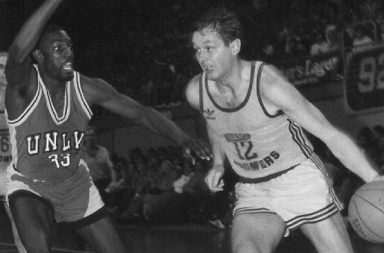Written June 2012
When I was a boy, sharing a bedroom with my older brother, the picture on our wall was of a cyclist desperately trying to climb a very steep mountain.
He was alone on a bare and stark terrain, with the sun beating down, but what haunted me about that photo was how his face was contorted in agony.
The cyclist was Englishman Tom Simpson, and the picture was taken only minutes before he collapsed and died on Mont Ventoux during the 1967 Tour de France.
Simpson was nearing the top of the gruelling climb when he began to weave wildly across the road, and fell. He was delirious but remounted and rode to within a kilometre of the summit before collapsing, still clipped into his pedals. He died of dehydration, exhaustion and the effects of drugs.
Today’s public may rightly be less sympathetic to a drug-taker, but in 1967 Britain wept for its hero, and cycling lost a world champion. I thought that picture was spooky, but my older brother gave it pride of place on our wall because to him it represented the courage of a man trying to conquer a mountain.
I will think about that picture on July 14, Bastille Day, when I go to Mont Ventoux, the brooding ogre they call “the Giant of Provence”. And I will think about the vow I made a year ago when I promised myself that I would make it over the biggest mountain of my life.
I’m one of those “Lycra lizards” you see clogging up the roads as we pedal through Ivanhoe and Eltham up to Kinglake or Warrandyte most Sunday mornings. I’m the one with toothpicks for calves and a distended body shape. In Lycra I look like a half-squeezed tube of toothpaste. I do my best work quaffing lattes outside our local coffee shop, where we sweaty old-timers skite about our morning’s meanderings.
For all its faults, cycling does our society a service. It gets old farts like me out of the house, albeit onto the roads. We bike riders might be nuisances, but we are nuisances with purpose.
In our delusional way, we aspire to be Cadel. We push our misshapen bodies to strive for the fulfilment of exertion and to climb our personal mountains, even if the only similarity we have with Cadel is that his bike also has a chain and two wheels.
About 15 months ago, my form dipped even worse than usual. At the same time, a lump started growing out of my neck. Most people might sense a cause for concern in those symptoms, but I didn’t. I can’t actually recall what I thought the lump was, but I didn’t think cancer could happen to me.
The surgeon cut me open, but he didn’t seem too worried either. It was only after he received the biopsy results that he calmly told my wife and I that he had removed a secondary tumour. He didn’t use the C word, but by then even I got the picture.
Fortunately, the next day my wife was at her Saturday netball game in Macleod when she came across a former workmate, who sensed something might be amiss, probably because my beloved was shaking like a dam about to burst.
As it turned out, the old friend’s husband, Andy, had gone down a similar road to the one I was about to take. Also a bike rider, he was diagnosed five years earlier with throat and neck cancer, and had suffered terribly, but recovered so well in the next year that he climbed some of the highest peaks in France.
After her netball game, my wife and I went to the friend’s house in Fairfield, where Andy and Kathy told us what we could expect. Andy was so brutally frank that I told him I didn’t know whether to thank him or not.
“Look on the bright side,” he smiled. “July is a good month to be knocked out.”
“I won’t break any records, but I will make it to the summit, where I will share the moment with my wife and daughters.”
“What’s so good about July?” I asked.
“You’ll be on the couch watching the Tour.”
It’s a sinking feeling your first time as a patient walking into a cancer hospital. The Peter MacCallum Cancer Centre is Australia’s only public hospital solely dedicated to cancer. It is one of an elite group of hospitals worldwide to have its own integrated cancer research program and laboratories.
But when you go in there as a sick person, you know you straddle a fine line. In the hallways and waiting rooms, you see people hooked up to drips, or scarred by the ravages of invasive surgery, or looking downcast, frightened and lonely. If you have a choice, you don’t want to be there.
But if you are facing the fight for your life, you want to be in the hands of the experts. The minute my wife and I met my oncologist we felt confident that she would give us every chance. She was professional, reassuring without sounding glib, and personable.
My wife asked the questions and wrote down what she said. We soon understood why Andy and Kathy had told us it was important for my wife to act as my advocate. My thoughts were racing so much that I took in only fragments of what the oncologist said.
Within a day of meeting that appointment, I was in the theatre again. After another operation, I went straight into six weeks of radiotherapy, with treatments every day but Sunday.
Before radiotherapy began, an impression of my face was taken and a mask made up. The mask was screwed onto my face for every treatment, a process that was confronting and uncomfortable. But the radiotherapists at the Peter Mac are so friendly they humanise an otherwise daunting experience.
As each week passed, the throat became increasingly raw, my sense of taste and appetite disappeared, and my weight dropped dramatically. By week four the only food I could eat was my friend Jenny’s chicken broth.
Rapid weight loss leaves you vulnerable to illness and infection, so it’s understandable that the nurses and oncologists are determined to keep you eating. I started the treatment at 77 kilograms, and was told that if my weight fell below 72kg I would have to be fed through a nasal tube. I was determined not to need the tube.
The weigh-ins were twice a week. When the kilos began dropping off me, I got an idea to sneak a few items, a paperweight, a pocket-knife and stapler, into my pockets for when I went on the scales. I thought I was clever, until my wife berated me, saying I was only fooling myself.
I think the nurses were also onto my little scheme, because one told me a sobering story of how an elderly patient had so many weights they fell through the lining in his pockets. His plot was revealed on the scales in full view of the medical staff.
I didn’t want to lose my dignity in a similar exposé, so I just tried to swallow every supplement drink I could.
The radiotherapy made my throat feel like it had been scraped over by a rasp. The drugs, including morphine, were necessary for the pain, but they had considerable side effects, not the least being a frightening slowdown in my waste-removal process. I was sore, sick and constipated, but I was fortunate. I had a loving wife as my advocate. And I was able to lie on the couch at home and lose myself in the breathtaking scenery and human drama of the world’s toughest sporting event.
I recorded and watched every second of the 2011 Tour de France, spending every day believing that I was riding up and down those mountains with Cadel.
When he duelled with the European guns, I was yelling in his ear, telling him that he had them beaten. When the Schleck brothers tried to coerce Cadel into working with them to catch Contador, I shouted at him to tell them to go to buggery.
When he sealed victory in the time trial, I was standing on the couch, screaming so much my old dog scampered out of the house, tail between his legs.
Mountain climbing at Tour level is like arm wrestling. One rider turns up the force, so that his rivals either respond or they admit that he is the better man. It is as personal as that.
Cadel does not impress me as a typical professional cyclist. He is surely the only bikie who follows the Dalai Lama, and his squeaky voice could never be called the roar of a warrior. But, in last year’s Tour, he was so brave, and he was an inspiration.
I like to think he and I climbed the mountains together. When he stepped onto the podium and tiny Tina sang the anthem, I vowed that during the next Tour de France I would be there to tackle the mountains.
That year has passed, and I’m eternally grateful to my family and friends, and the wonderful people at the Peter Mac. I will keep having regular tests, but the tumours have gone.
I’m one of the lucky ones. The throat is still a pain. I can taste some foods but not others, and I get tired easily. But I’m back riding the bike, soaking up all the glorious scenery out through Kangaroo Ground, Panton Hill and Mount Pleasant, which is a relief seeing that I’m still only a youthful 56. I’ve even been troubled by a calf injury, which has baffled those fellow pedallers who didn’t believe I had calves.
On July 14, France’s national day, I will set out with two friends from the foot of Mont Ventoux to ride up the legendary mountain. It rises 22 kilometres at a gradient of about 9 per cent, which is roughly equal to climbing from St Andrews to Kinglake five times in a row. I won’t break any records, but I will make it to the summit, where I will share the moment with my wife and daughters.
I’ll be able to boast that I conquered Mont Ventoux, although I will never tempt the gods by saying that I beat cancer.
On the descent, I will stop a kilometre beneath the summit, at the granite memorial marking the place where Tom Simpson died during the Tour of 1967. There I will pay my respects to the spirit that loomed large over my formative years and I will think of all the courageous people out there who are trying to conquer a mountain of their own.
Postscript: On Bastille Day 2012 the author climbed Mont Ventoux, along with mates Tony and Theo. As a mark of respect, we left our drink bottles at the shrine to Tom Simpson. August 2017 will be the 50th anniversary of Simpson’s passing.



